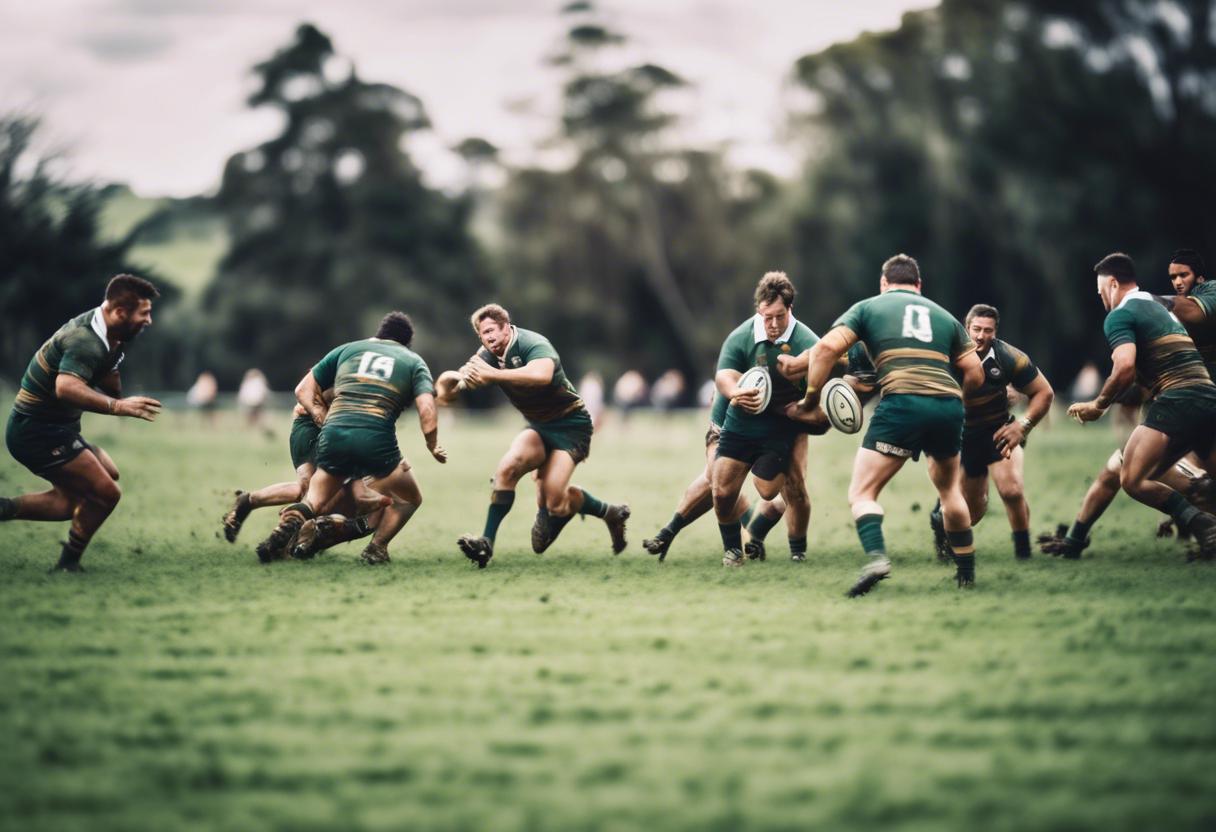In the leadup to the 1995 World Cup, a fierce rivalry between Australian media tycoons Rupert Murdoch and Kerry Packer, aimed at controlling satellite television, had significantly impacted rugby. The inevitable professionalisation of the sport was looming, yet there was a profound disagreement over the course it should take.
The game risked imploding under the strain. During this tumultuous period, I was employed by the New South Wales Rugby Union (NSWRU), an institution situated at the heart of this tussle for control over the future role and nature of the sport. Despite NSWRU’s proud history as the second oldest rugby union worldwide, I realised that traditional powerhouses such as Ireland, England, Scotland, and Wales were unwilling to offer us any assistance in this crisis.
Then, NSWRU was under the superb leadership of Chairman Ian Ferrier. At the height of the turmoil, when many players were on the verge of joining the newly formed professional franchises under World Rugby Corporation, he famously asserted, “Son,” a term he used to express deep affection, “there won’t be any rescue. It’s up to us to find a way out.”
Being part of this struggle, I am convinced that Ferrier’s extraordinary leadership and courageous choices saved rugby during a critical period, not just in Australia, but worldwide.
In the crucible moment of a Sydney spring evening, I remember being at a board meeting when Ian announced the “open” status of rugby in New South Wales. If the sport had not moved towards professionalism, it would have crashed in New South Wales, a catastrophic outcome for Australian Rugby.
His decision was the most impactful in rugby history since William Webb Ellis picked up the soccer ball for the first time. The NSWRU commenced communication with players, leading to the fall of the global rebel organisation. We realised there would be no outside help. We needed to rescue ourselves, and so we did.
In 1999, the Australian rugby team, the Wallabies, made a stunning comeback to clinch the World Cup, bringing home the prestigious William Webb Ellis trophy. This was a stellar turnaround for a team that had been on the brink of disaster merely four years prior.
Fast forward twenty-nine years, Australian Rugby once again faces severe difficulties. This time, it’s not due to a hostile takeover, but rather a humbling defeat to the Pumas in Santa Fe. The loss has provoked some sections of the northern rugby media to suggest that the current Lions’ tour of Australia should be redirected to South Africa, underlining their indifference towards the overall health of worldwide rugby.
Many of these critics conveniently forget the catastrophic outcome of the last Lions tour to South Africa and its negative impact on the sport. Rugby Australia (RA), however, views the unique Lions tour as an instrumental part of their strategy to reestablish rugby within the Australian sporting scene and regain fiscal autonomy. They have already sold the majority of the tickets, and any suggestion of reimbursing the money is off the table.
Evidence to support RA’s strategy is compelling, yet it’s been largely ignored in the north. September in Australia marks the peak of both Rugby League (NRL) and Australian Rules Football (AFL) seasons. Significant NRL and AFL playoff matches were staged in Sydney concurrently with the Bledisloe Cup Test match.
While the AFL semi-final attracted 44,053 spectators at the Sydney Cricket Ground, the two NRL playoff games drew an audience of 59,942 at the Sydney Football Stadium. The Bledisloe Cup match at the Olympic Stadium surpassed both with an impressive 68,061 rugby supporters in attendance. Similarly, the previous year’s Bledisloe Test at the gargantuan Melbourne Cricket Ground saw a crowd of 83,944 dedicated rugby fans.
This widespread support is indicative of the resilient Australian rugby fan base, despite the struggles the sport is currently undergoing in the country. Andy Farrell, head coach of the Lions, is fully aware of the potential of Australian rugby to bounce back. Farrell himself garnered acclaim from the Australian Rugby League community for his excellent displays throughout his career as a rugby forward for England. Despite Farrell’s talent, his team has frequently been on the receiving end of a beating from the Kangaroos.
Let’s not forget that in every sport, revenge is a potent feeling, and Farrell will have learnt from his harsh encounters to never underestimate an Australian side. English teams across various sports have a notorious and comical habit of repeating this miscalculation against their Aussie counterparts.
Currently, only a handful of overseas players are being selected by Joe Schmidt. While this strategy seeks to safeguard the sanctity of the Super Rugby franchises, it’s apparent that Australia lacks sufficient talent to offer a victorious Wallabies side solely from these players.
Players such as La Rochelle’s Will Skelton and Waratahs’ player of the year, Lachlan Swinton, who has recently moved to Bordeaux, are in high demand. The global hunt for Wallabies players seems to be picking up speed, and by the time the Lions tour comes around, I predict it will be the adopted strategy.
Adding to this is the comeback of Joseph Sua’ali’i to rugby from the league. Sua’ali’i, previously a renowned rugby schoolboy, is set to join Joe Schmidt’s side for the November internationals. He is a gifted athlete who can play either as a fullback or a centre.
The Lions might have the luxury of picking from four national sides but are restricted to just 15 players on the field. The Wallabies demonstrated against the 2001 Lions that by next year’s July, Australia could possibly bring together a squad that leaves the northern side more puzzled than they anticipated.
However, the Wallabies know that there will be no white knights to their rescue. Like always, they are their only hope for salvation.

